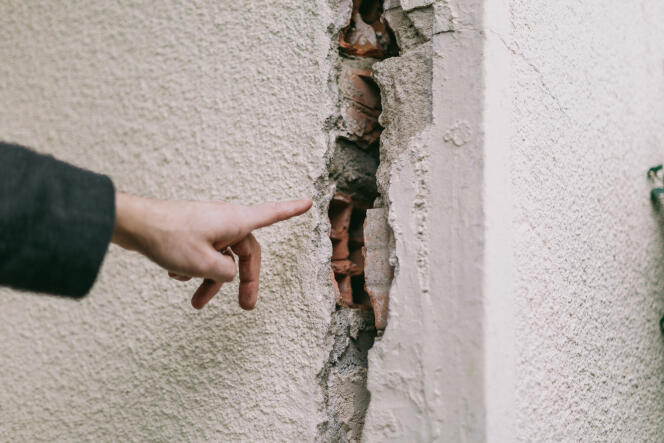Some 3.5 billion euros. This is the historic amount paid by insurance companies for houses damaged by the droughts of 2022, through the natural disaster compensation scheme, known as Cat Nat – or 70% more than the previous record , dating from 2003, according to estimates transmitted by the sector, Tuesday October 17.
If the bill promises to be much less steep for 2023 (around 900 million euros), the trend is serious. Under the effect of climate change, “drought appears to be the most worrying peril given the amount of damage it causes [sur les maisons] and their strong evolution in the future »writes the Central Reinsurance Fund (CCR), the public reinsurer, which manages Cat Nat.
With the rapid succession of droughts, these compensations represented 70% of the Cat Nat claims over the last five years. Behind these figures: tens of thousands of houses damaged, cracked, even threatened each year, and as many homes in complex, sometimes dramatic situations.
So the B. family, who lives in Halluin (North), with two children aged 9 and 14. For them, the first cracks, which appeared in the summer of 2019, worsened significantly a year later. The cause is the phenomenon of shrinkage-swelling of clays (RGA): when the water content of clays varies, depending on the weather, clay soils are subject to strong variations in volume and consistency, generating land movements. likely to damage the structure of the building.
“Deplorable” living conditions
It is in this house, near the Belgian border, that the deputy (Renaissance, North) Vincent Ledoux returned to the Minister of the Interior, Gérald Darmanin, a report titled “RGA, let’s not wait until it’s a disaster”, October 6. A not insignificant choice for the delivery of these 72 pages which place the victims and their struggles at the heart of the reflection on the RGA, a phenomenon destined to increase with global warming. According to the France Insurers federation, this risk weighs, on a medium or high level, on around 11 million houses.
“The living conditions of the B. family are deplorable – the shutters and windows no longer open, the tiles are lifting, heating consumption has exploded”describes the text, specifying that rehousing is impossible because it is not covered by the insurer and that the household is still repaying the loan for their house.
He calculates that it will ultimately take at least seven years between the first cracks and the return to normal life. The long treatment process continues. The municipality was recognized as being in a state of natural disaster for 2020. Three expert visits took place. The B. are waiting to know if the house will be repaired or demolished and rebuilt.
You have 66.51% of this article left to read. The rest is reserved for subscribers.
